Genetics is the study of genes Genes A category of nucleic acid sequences that function as units of heredity and which code for the basic instructions for the development, reproduction, and maintenance of organisms. DNA Types and Structure and their functions and behaviors. Genetics is an important topic for board examinations, and a thorough understanding of different words used in the study of genetics is an important piece of knowledge. Crucial terms in the study of genetics are listed and defined below, in alphabetical order.
Last updated: Jul 28, 2023
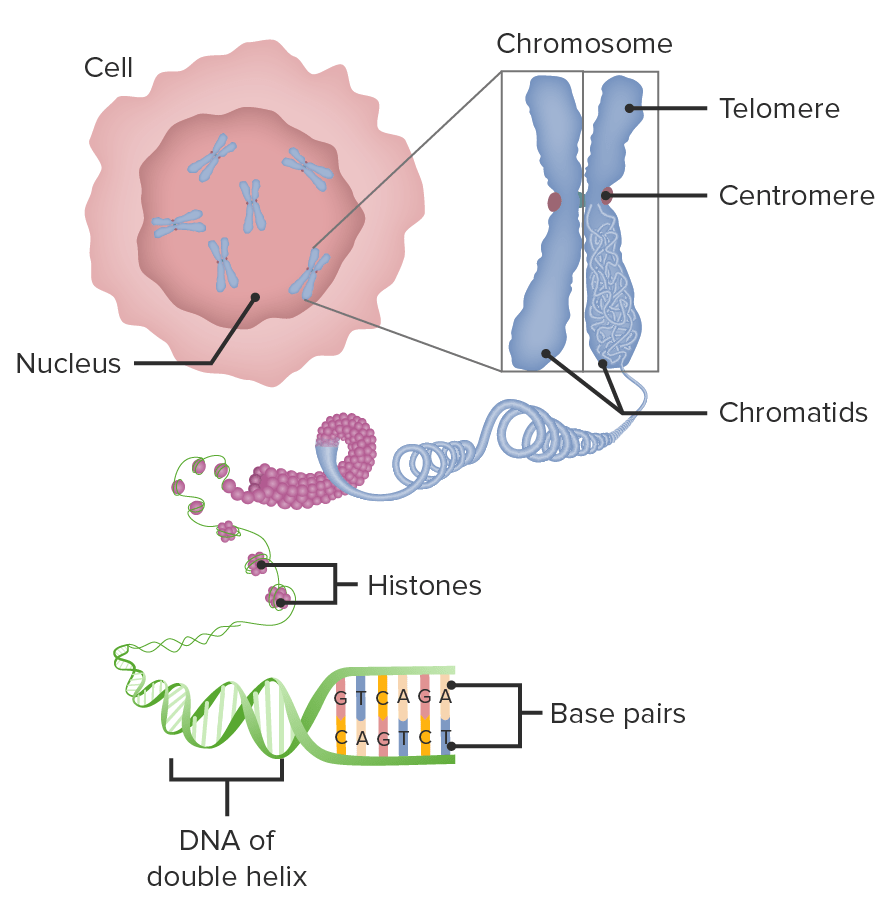
Structure of a chromosome
Image by Lecturio.
DNA molecule
Image by Lecturio.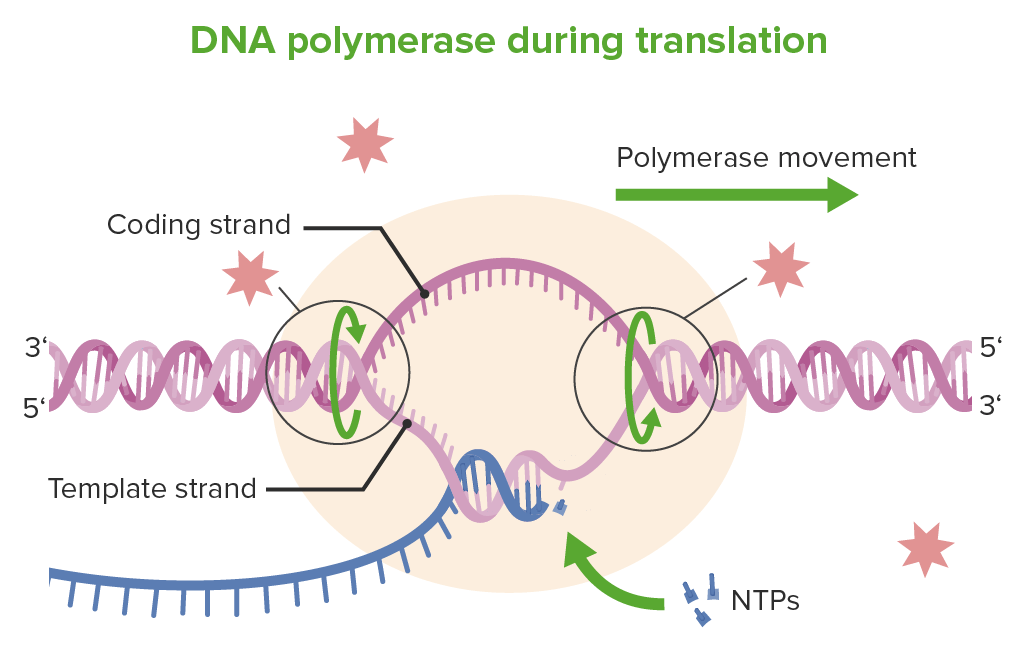
DNA polymerase during translation:
The coding and template strand can be seen. The coding strand is also known as the “sense” strand and the template strand acts as a “template” for RNA polymerase.
NTPs: nucleoside triphosphates

Human male karyotype:
A karyotype is a complete set of matched, homologous chromosomes (the X chromosome is highlighted).

Comparison of mitosis and meiosis
Image by Lecturio.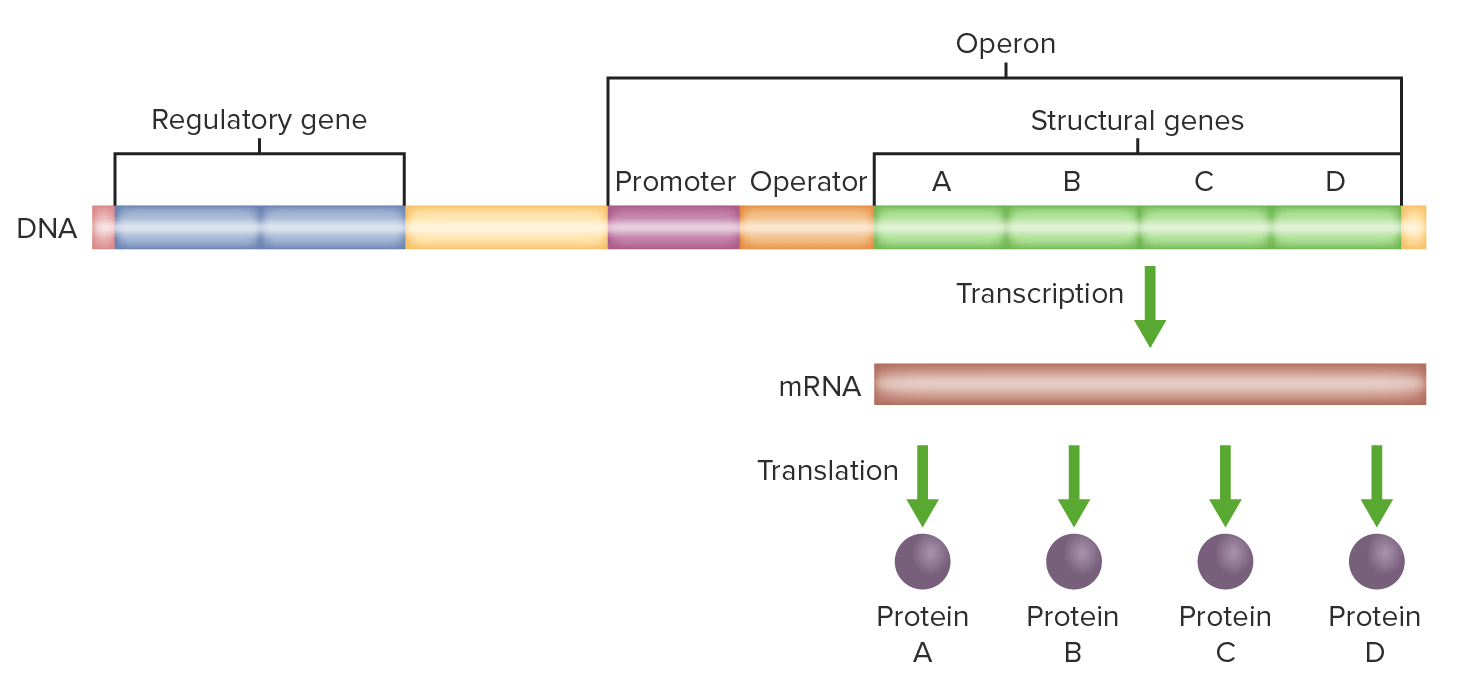
Diagram showing an operon model with regulator, promoter, operator, and structural genes:
The operon contains the genes of interest.
The promoter is the binding site for certain proteins to allow initiation of transcription.
The operator contains the code necessary to begin the process of transcribing the DNA.
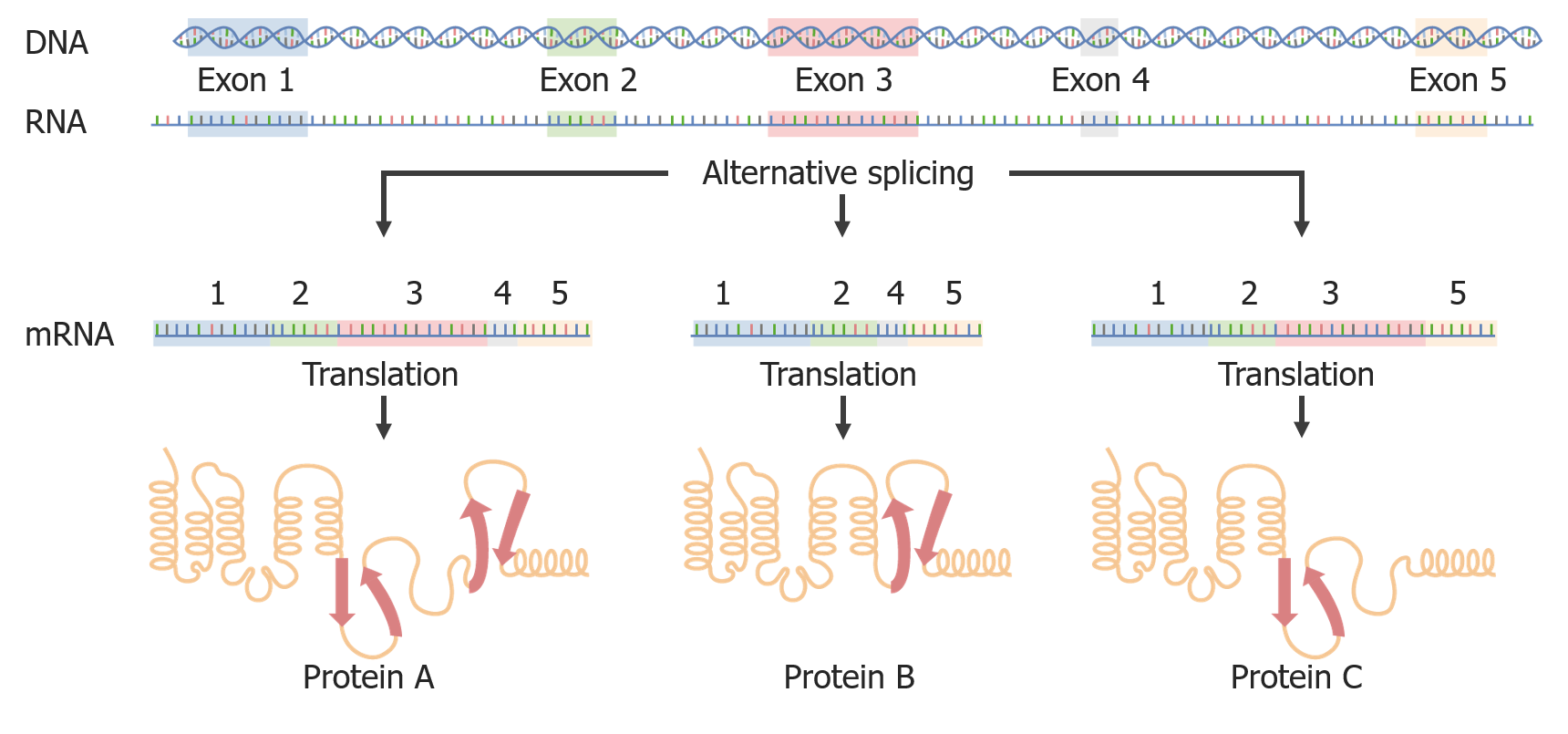
Alternative splicing:
By splicing mRNA in different ways, different proteins can be created from the same mRNA.

Image of a plasmid: extrachromosomal circular DNA
Image by Lecturio.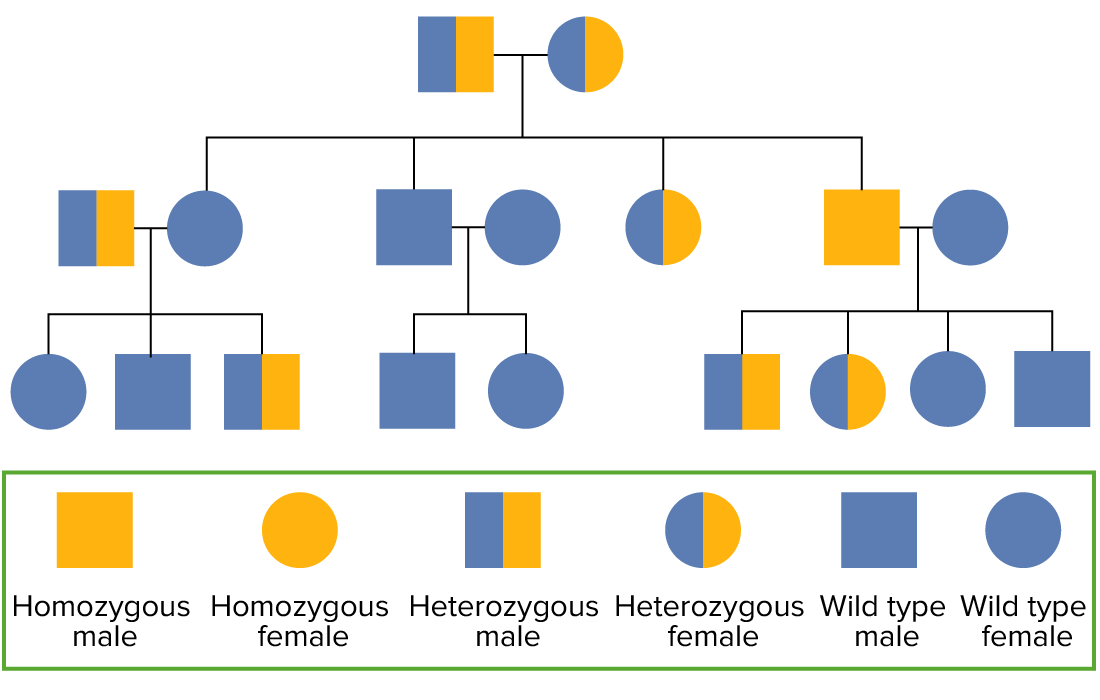
Autosomal recessive pedigree chart
Image by Lecturio.
Construction of recombinant DNA in which a foreign DNA fragment is inserted into a plasmid vector:
The gene indicated by the white color is inactivated upon insertion of the foreign DNA fragment.

The structure of a mature eukaryotic mRNA includes:
5′ cap: The linkage of 7-methylguanosine aids in recognition by protein synthesis machinery and protects from degradation by exonucleases.
UTR: untranslated regions
CDS: coding sequence, which consists of codons corresponding to specific amino acids
3’ poly-A tail: a chain of adenylate molecules, which maintains the stability of mRNA as it exits the nucleus into the cytosol

Structure of ribosomes:
A ribosome is a cellular particle made of RNA and protein that serves as the site for protein synthesis in the cell. The ribosome reads the sequence of the messenger RNA (mRNA) and, using the genetic code, translates the sequence of RNA bases into a sequence of amino acids.

Central dogma of molecular biology:
Illustration of the difference between transcription and translation along with the required enzymes.

Secondary structure of transfer RNA (tRNA), along with various functional sites of the tRNA.
Image by Lecturio.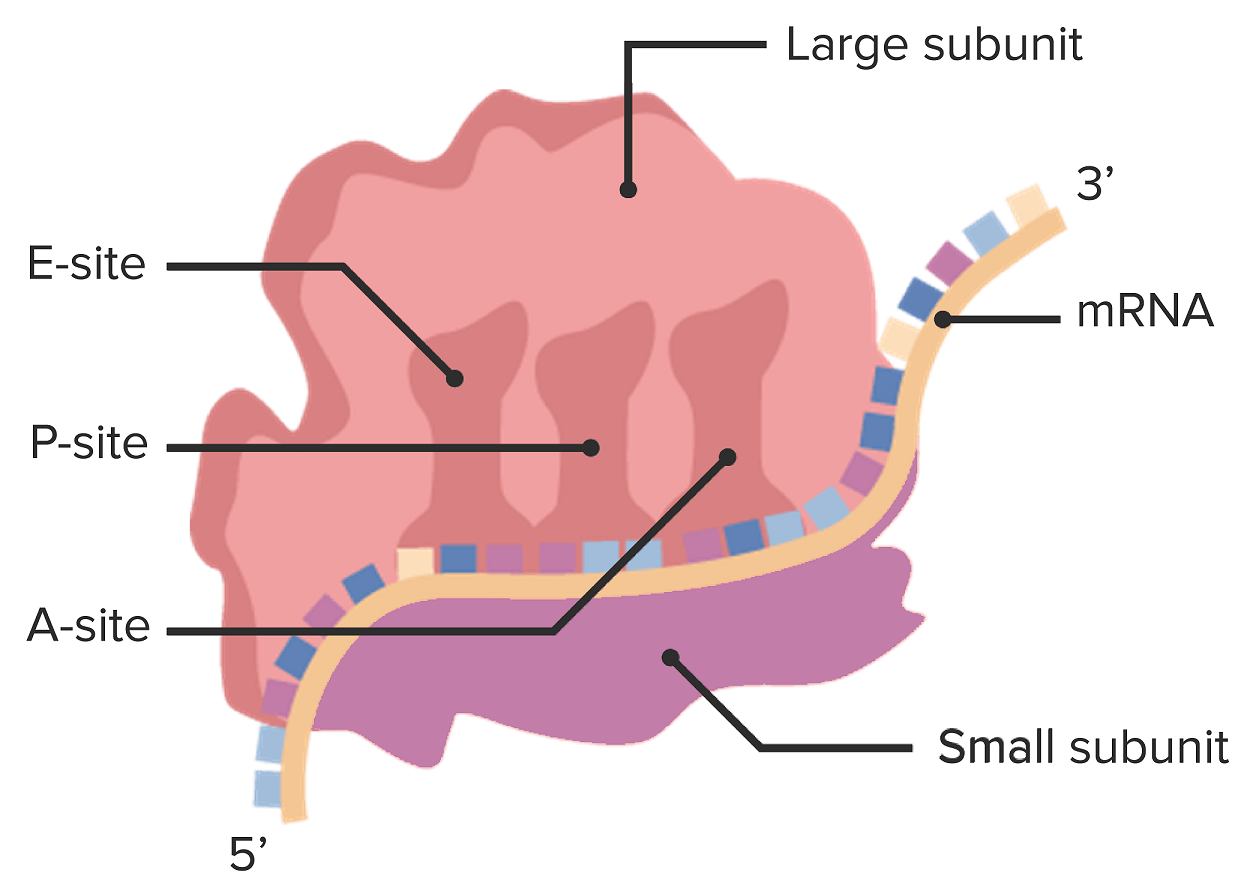
Structure of a ribosome:
The large subunit is demonstrated on top with A, P, and E binding sites for charged transfer RNAs; the small subunit is below the messenger RNA (mRNA).